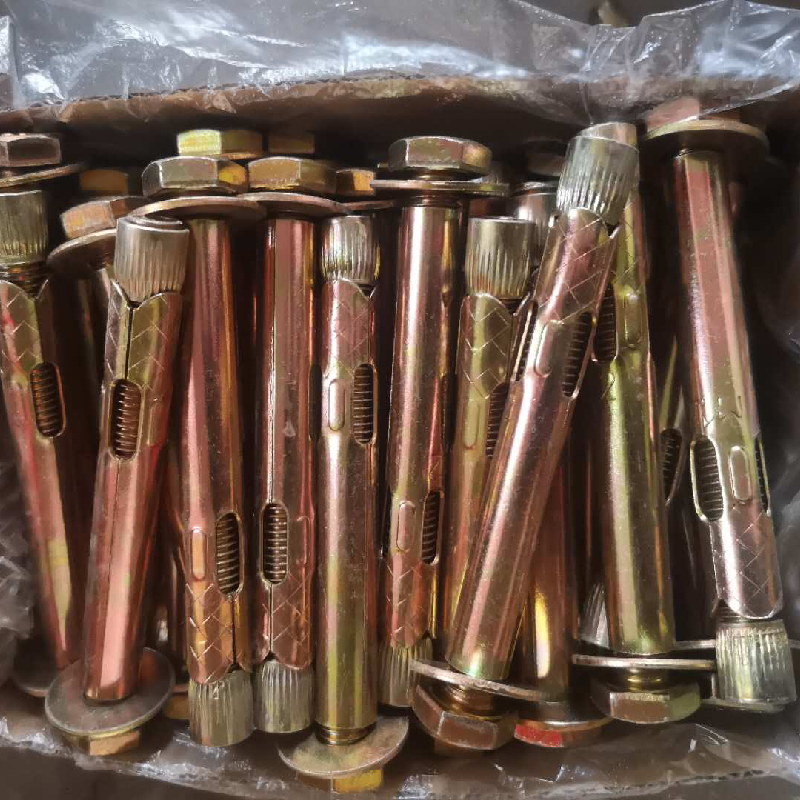নভে. . 30, 2024 08:17 Back to list
Plain Washers DIN 125 Specifications and Applications for Fastening Solutions
Understanding Plain Washers According to DIN 125 Standards
When it comes to mechanical engineering and construction, the choice of fasteners and their accompanying components can significantly impact the overall performance and longevity of an assembly. Among such components, plain washers, specifically those conforming to DIN 125 standards, play a vital role. In this article, we will delve into the characteristics, applications, and importance of plain washers DIN 125.
What is a Plain Washer?
A plain washer is a flat, disc-shaped component with a central hole, primarily used to disperse the load of a fastener, such as a bolt or nut, over a larger area. This reduces the risk of damage to the surface being fastened and enhances stability. Additionally, washers help prevent loosening by acting as a cushion, absorbing vibrations and friction.
DIN Standards Explained
The Deutsche Industrie Norm (DIN) represents the German Institute for Standardization, and it establishes guidelines for various components and materials in engineering and construction. DIN 125 specifically refers to a type of plain washer that has standardized dimensions and properties, ensuring uniformity and compatibility in applications.
DIN 125 washers are available in several styles, primarily categorized by their thickness and external diameter relative to the size of the bolt for which they are intended. This standardization makes them easily interchangeable and simplifies the design and assembly processes.
Characteristics of DIN 125 Washers
1. Material DIN 125 washers can be fabricated from various materials, including steel, stainless steel, brass, and plastic. Each material offers different strength, corrosion resistance, and thermal stability properties, allowing engineers to select the appropriate washer for specific applications.
2. Surface Finish Depending on the environment in which a washer will be used, surface treatments can vary from bright zinc plating to black phosphate. These treatments can provide additional corrosion resistance and aesthetic appeal.
3. Dimensions DIN 125 specifies exact dimensions for inner and outer diameters, as well as thickness, which are crucial for ensuring the proper fit and function in assembly. Common sizes include those that accommodate standard bolt diameters, such as M5, M6, M8, M10, and M12, among others.
Applications of DIN 125 Washers
Plain washers according to DIN 125 standards find extensive application across various industries, including
plain washer din 125

- Automotive Used in car assemblies to secure components like engine mounts, suspensions, and other critical areas that require even weight distribution.
- Construction Employed in the fastening of structural elements, where load distribution is vital to the integrity of beams, columns, and other structures.
- Electronics In electronic devices, small-sized plain washers can be found in circuit boards and assemblies to secure components while preventing short circuits.
- General Machinery They are ubiquitous in machinery, where they protect surfaces against damage caused by bolt heads and nuts while also securing connections.
Importance of Using the Correct Washer
Using the appropriate washer is essential for several reasons
1. Load Distribution A proper diameter allows for even distribution of forces, which prevents stress concentration points that can lead to material failure.
2. Protection Washers act as a barrier, preventing direct contact between the fastener and the material, thus reducing the risk of deformation or wear.
3. Safety In critical systems like automotive or structural components, ensuring the right fasteners and washers can be the difference between safe operation and catastrophic failure.
4. Vibration Resistance The cushioning effect of a washer helps absorb vibrations that can cause loosening over time, enhancing the durability and reliability of the assembly.
Conclusion
Plain washers as specified by DIN 125 are integral components in a wide range of applications, providing essential support, protection, and reliability in mechanical assemblies. Their standardized dimensions and material properties facilitate their use across various industries, making them a go-to solution for engineers and designers. Understanding the importance and functionality of these seemingly simple components is crucial for anyone involved in mechanical design and assembly processes. When selecting washers, always consider the specific requirements of your application to ensure optimal performance and longevity.
-
The Ubiquitous Reach of DIN934 in Application Realms
NewsMay.16,2025
-
Exploring Different Bolt Types
NewsMay.16,2025
-
Cracking the Code of Sleeve Anchor Mastery
NewsMay.16,2025
-
Clamp Design Principles,Types and Innovations
NewsMay.16,2025
-
Artistry Inspired by the Humble Anchor Bolt
NewsMay.16,2025
-
A Deep Dive into Screw Types
NewsMay.16,2025


